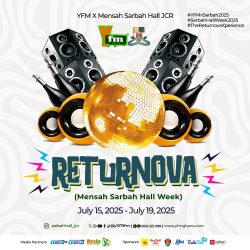By Ethel COFIE
Months ago, I wrote an article speculating on what it would look like if MTN Ghana obtained a banking license.
I followed it up with a piece exploring how fundamentally cross-border payments across Africa would change if telcos like MTN and Orange were licensed to do wallet-to-wallet transactions across their operational countries.
If this ever became reality, the entry of dominant telecom companies like MTN into the regulated banking sector would represent one of the most significant disruptions to African retail banking in decades.
With their scale, infrastructure, and digital fluency, companies like MTN could potentially render traditional retail banking models obsolete.
This paper explores how and why this shift is happening, what banks stand to lose, and—most importantly—how banks can reimagine their value proposition in an era where banking may not begin or end with banks.
It blends conventional wisdom with out-of-the-box strategic pivots and real-world data to provide a roadmap for the next generation of banking.
The Rise of the Telco-Bank Hybrid
By 2023, MTN Mobile Money had over 63 million active users across Africa. With banking licenses in countries like Nigeria and Ghana, MTN is moving beyond basic mobile money to offer full-stack financial services—savings, loans, insurance, and payments—without needing to build a single branch.
Traditional retail banks face an existential threat. But this is not just a story of competition—it’s a story of reinvention.
Why MTN (and Telcos) Are Perfectly Positioned
2.1 Scale + Trust + Simplicity = Power
- MTN has over 290 million subscribers across Africa.
- In countries like Ghana and Uganda, over 70% of adults use mobile money—compared to just 40% with bank accounts (World Bank Findex, 2021).
- Telcos have built trust at scale, something banks continue to struggle with, especially in informal and rural sectors.
Infrastructure without the Overhead
Where a traditional bank might spend $200,000+ to set up a branch, MTN can onboard thousands of customers via USSD and agent networks at minimal cost. For every branch a bank opens, MTN can activate 10,000 mobile agents.
What Banks Risk Losing
- Deposits: With the ability to offer savings accounts, MTN could pull significant deposits away from traditional banks.
- Credit: By leveraging mobile data, MTN can offer nano-loans and salary advances. For example, in Kenya, M-Pesa’s M-Shwari disbursed $3 billion in microloans in 2022.
- Transaction Revenue: With cheaper, faster mobile payments, banks risk becoming irrelevant in the low-to-middle-income transaction segment.
But It’s Not the End: A New Banking Imagination
- Conventional Strategies That Still Work—If Reimagined
Hyper-Personalized Banking with Data Intelligence
- Invest in AI/ML to analyze customer behavior across accounts, cards, and digital platforms.
- Case in point: Capital One in the U.S. uses behavioral data to suggest budgeting habits and personalized savings plans.
Reinvent the Branch as a “Financial Hub”
- Transition branches into advisory and SME service centers.
- Example: Santander Bank’s “Work Café” combines co-working spaces with banking services—turning branches into lifestyle destinations.
SME and Corporate Focus
- While telcos dominate individual wallets, banks can own the SME space through tailored credit, trade finance, and supply chain solutions.
- According to the IFC, there’s a $331 billion credit gap for African SMEs—a massive, underserved market.
Out-of-the-Box Strategies for Competitive Reinvention
Banking-as-a-Service (BaaS) for Ecosystem Growth
- Become the “Stripe for Africa” by offering APIs that fintechs, telcos, and startups can plug into.
- Example: Sterling Bank Nigeria’s “Specta” and “OneBank” platforms enable third-party service innovation.
Co-create with Telcos Instead of Competing
- Partner with telcos to offer layered services—e.g., telco handles payments, bank manages credit/risk.
- Bold idea: Joint credit scoring systems combining mobile and bank data.
Digital Identity and Wallet-as-a-Platform
- Develop interoperable digital ID and wallet platforms for governments, schools, and cooperatives.
- Imagine: a bank that provides a national ID-linked wallet, a school fees payment app, and a municipal tax solution.
Gamified Financial Education + Credit Building
- Launch youth-oriented gamified banking apps where users earn badges for saving, budgeting, or building credit.
- Example: Step and Greenlight in the U.S. offer teen debit cards with built-in financial literacy tools—an untapped market in Africa.
Embedded Finance in Unexpected Places
- Integrate banking services into ride-hailing, farming cooperatives, and e-commerce platforms.
- Why it works: Embedded finance reduces friction. For example, Safaricom’s Digifarm offers agri-input financing directly to farmers within their supply chains.
The Future of Retail Banking: Reimagined Personas and Journeys
- Old Persona: A man in a suit walking into a branch to deposit a cheque.
- New Persona: A female SME owner applying for a loan via WhatsApp.
- Next Persona: A 19-year-old building credit by paying for a digital course using a mobile wallet.
Retail banks must prepare for non-linear, app-native, embedded customer journeys
Conclusion: Survive or Shape the Future?
Telcos like MTN and Orange holding banking licenses are not merely a tech threat—they are a strategic signal. A signal that the cost to serve has dropped permanently, that customers demand access over architecture, and that digital intimacy is the new trust.
Retail banks must stop viewing telcos as competitors and start thinking like telcos. The banks that thrive will not just digitize—they will platformize, partner, personalize, and pivot to new economies of scale.
The choice is stark: become invisible, or become essential in a newly imagined financial ecosystem.
📊 Key Stats Recap
| Metric | Value |
| MTN Subscribers (Africa) | 290+ million |
| Mobile Money Users (Ghana/Uganda) | 70% of adults |
| Traditional Bank Account Penetration | ~40% |
| Credit Gap for African SMEs | $331 billion |
| Average Branch Setup Cost | $200,000+ |
| M-Shwari Loans (Kenya, 2022) | $3B disbursed |










